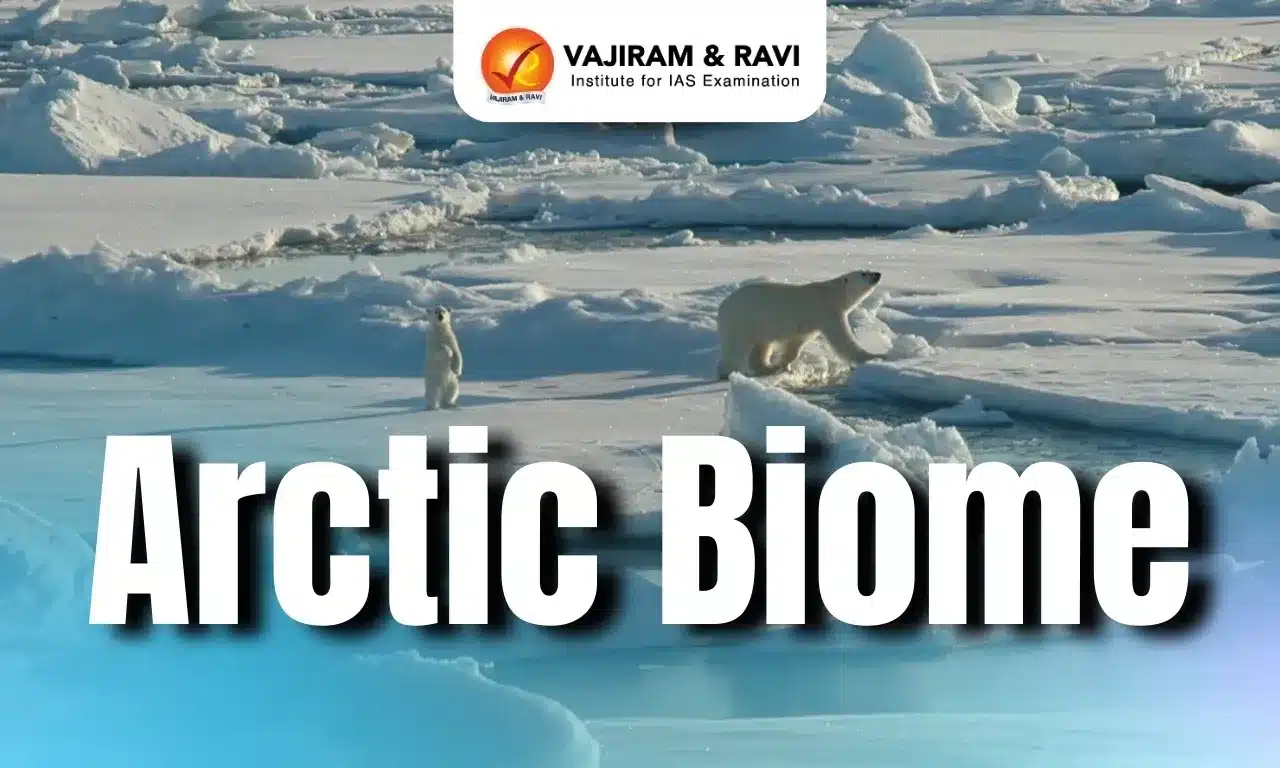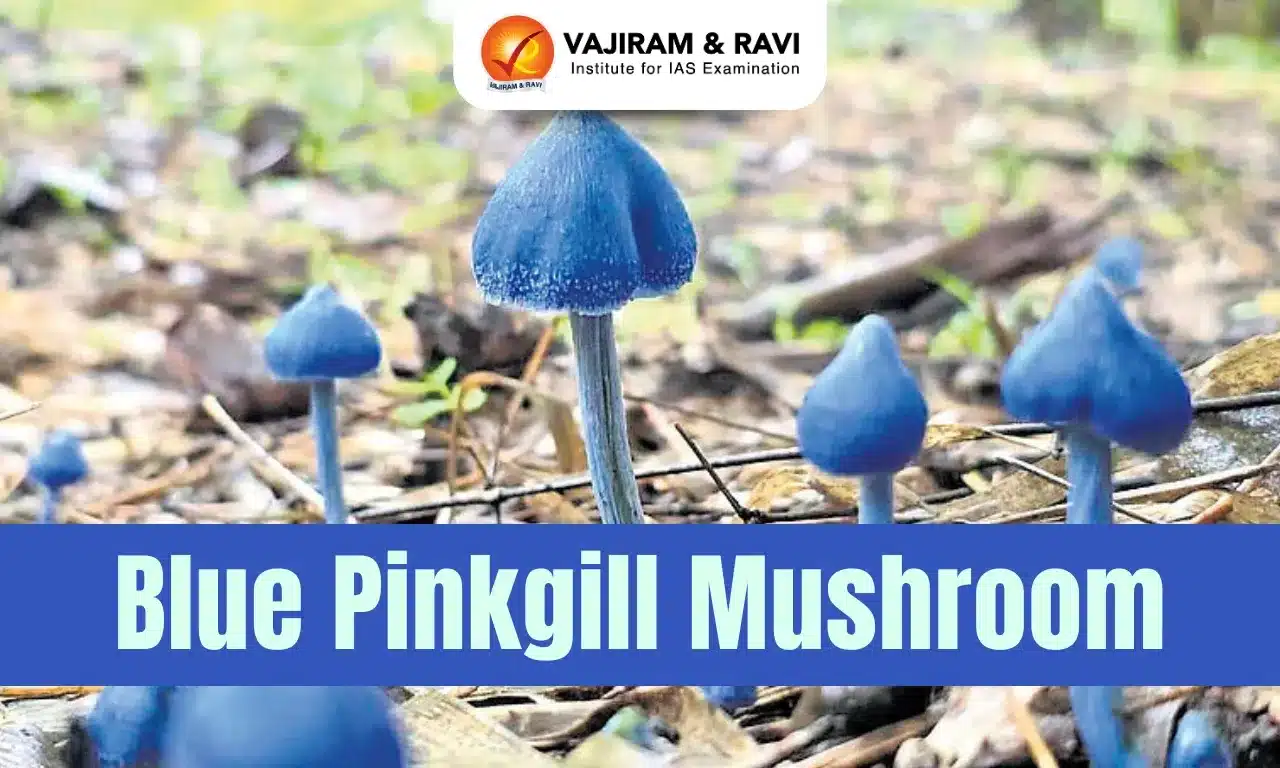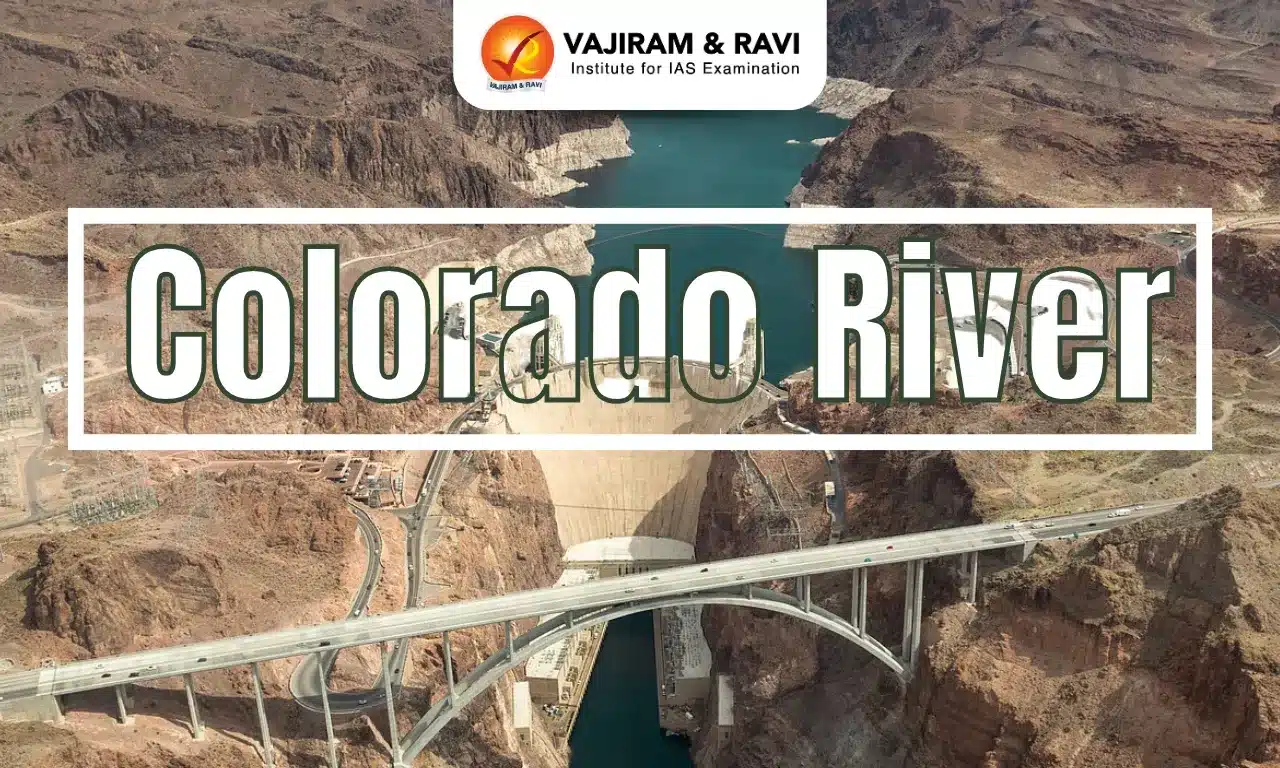Arctic Biome Latest News
The 2024 Arctic Report Card by the US NOAA confirms this trend, noting that frequent fires and fossil fuel pollution are turning the Arctic tundra into a carbon source.
The Arctic Biome
- The Arctic Biome is a treeless plain with permafrost within a meter of the soil surface. Summers cause only the top layer to thaw, limiting plant growth and root penetration.
- Despite its rocky, nutrient-poor soil, the tundra holds large amounts of carbon in peat (decayed moss) and humus (organic matter), making it a critical carbon sink.
- The Arctic tundra biome spans 11.5 million km², covering land north of the Arctic Circle, including parts of Canada, Greenland, Iceland, and Eurasia.
- The climate here is extremely cold, with temperatures ranging from -60°C in winter to 15.5°C in summer. Annual precipitation is low (150–250 mm), mostly in snow and sleet form.
- Vegetation is herbaceous, including grasses, lichens, mosses, and low shrubs like dwarf willows, adapted to cold, wind, and poor soil.
- Animal life includes caribou, polar bears, arctic foxes, musk ox, and migratory birds like loons and snow geese. Insects like mosquitoes flourish in the summer due to melting snow.
- Human habitation is limited, mainly to coastal areas, with indigenous communities like the Eskimos living semi-nomadic lives and relying on fishing and hunting.
- Resource extraction has increased in recent decades. Examples include gold mining in Alaska, petroleum in Kenai Peninsula, and iron ore in Labrador, Canada, and Kiruna, Sweden.
- Infrastructure like railways and Arctic ports have enabled the transport of minerals, timber, and furs, especially from Siberia, assisted by modern icebreakers
Arctic Boreal Zone (ABZ): From Carbon Sink to Carbon Source
- The Arctic Boreal Zone (ABZ) — comprising tundra, coniferous forests, and wetlands — has historically acted as a major carbon sink, storing vast amounts of organic matter in permafrost.
- A study in Nature Climate Change (2025) found that over 30% of the ABZ has stopped sequestering carbon and is now releasing it, reversing centuries of carbon absorption.
- Permafrost Thaw: Permafrost is permanently frozen ground rich in organic material. As global warming raises topsoil temperatures, this material decomposes, releasing carbon dioxide and methane.
- This triggers a feedback loop: Wildfires release carbon, increasing global warming, which in turn thaws more permafrost, leading to more fires and emissions.
Arctic Biome FAQs
Q1. What defines the Arctic biome?
Ans. The Arctic biome comprises tundra ecosystems with permafrost, low biodiversity, and extreme cold. It spans northern latitudes (66.5°N+) and hosts species like polar bears, Arctic foxes, and migratory birds.
Q2. Why is the Arctic ecologically significant?
Ans. It regulates global climate via ice-albedo feedback, stores methane in permafrost, and serves as a breeding ground for marine species critical to fisheries.
Q3. What threats does climate change pose to the Arctic?
Ans. Warming at 3x the global rate melts sea ice (13% loss/decade), disrupts Indigenous communities, and risks releasing 1,400 gigatons of trapped carbon.
Q4. How is India involved in Arctic governance?
Ans. India’s Himadri research station (Svalbard) studies climate impacts. It holds observer status in the Arctic Council and collaborates on sustainable development.
Q5. Name a key treaty protecting the Arctic.
Ans. The Svalbard Treaty (1920) grants signatories non-discriminatory resource access while mandating environmental preservation.
Source: TH
Last updated on July, 2025
→ UPSC Notification 2025 was released on 22nd January 2025.
→ UPSC Prelims Result 2025 is out now for the CSE held on 25 May 2025.
→ UPSC Prelims Question Paper 2025 and Unofficial Prelims Answer Key 2025 are available now.
→ UPSC Calendar 2026 is released on 15th May, 2025.
→ The UPSC Vacancy 2025 were released 1129, out of which 979 were for UPSC CSE and remaining 150 are for UPSC IFoS.
→ UPSC Mains 2025 will be conducted on 22nd August 2025.
→ UPSC Prelims 2026 will be conducted on 24th May, 2026 & UPSC Mains 2026 will be conducted on 21st August 2026.
→ The UPSC Selection Process is of 3 stages-Prelims, Mains and Interview.
→ UPSC Result 2024 is released with latest UPSC Marksheet 2024. Check Now!
→ UPSC Toppers List 2024 is released now. Shakti Dubey is UPSC AIR 1 2024 Topper.
→ Also check Best IAS Coaching in Delhi















